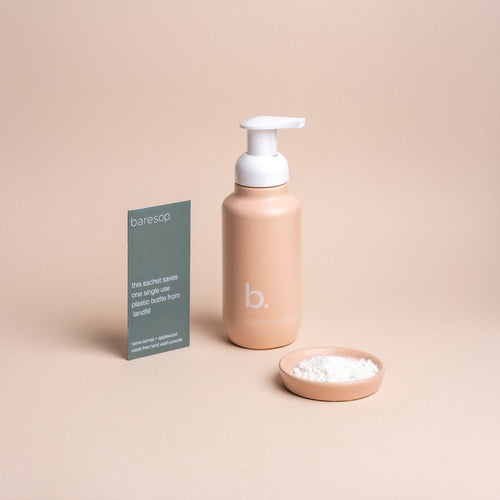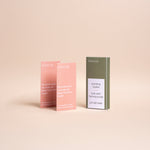
Clean Hands, Clear Conscience: Embracing Hand Washing and a DIY Recipe

This week is National Hand Washing Awareness Week, a fantastic opportunity to delve deeper into the world of hand soaps. When it comes to hand hygiene, the soap we use plays a crucial role beyond just cleaning our hands. Let's explore the often-overlooked aspects of hand soap: ingredients, packaging, and sustainable choices.
Ingredients Matter
Hand soaps are our frontline defence against germs, but what exactly are we lathering onto our skin? Paying attention to ingredients is essential.
Triclosan: Known for its antibacterial properties, but it can disrupt hormones and contribute to antibiotic resistance.
Parabens: Used as preservatives, but they may mimic estrogen and have been linked to hormone disruption.
Sodium Lauryl Sulfate (SLS) and Sodium Laureth Sulfate (SLES): These surfactants can be harsh on the skin, causing irritation and dryness.
Phthalates: Often found in fragrances, they're associated with endocrine disruption and potential developmental issues.
Formaldehyde: Sometimes listed as formaldehyde-releasing preservatives, these can cause skin irritation and are considered carcinogenic.
Artificial Colors and Fragrances: Synthetic dyes and fragrances can cause skin irritation and allergic reactions.
Propylene Glycol: While it helps products retain moisture, it can also cause skin irritation and allergic reactions in some individuals.
Opting for soaps with natural ingredients like essential oils, aloe vera, or glycerin can be a gentler, safer choice for our skin.
Eco-Friendly Packaging
While considering what goes into the soap, it's equally important to think about the packaging it comes in. Excessive plastic use in packaging contributes significantly to environmental pollution. Refillable soap pumps—a sustainable solution that reduces plastic waste. Brands like Baresop champion this cause, offering refillable options that cut down on single-use plastics. It's a small change with a big environmental impact.
Baresop: A Sustainable Solution
Speaking of Baresop, this brand is a beacon of sustainable practices in the realm of hand soaps. Their commitment to refillable soap pumps not only aligns with eco-consciousness but also maintains a focus on quality ingredients. This dual approach—mindful of both health and the environment—is a testament to their dedication to making a positive impact.
Imagine a world where every hand wash contributes not just to personal cleanliness but also to the health of our planet. Baresop is a step in that direction, offering consumers the chance to make a difference with each refill.
DIY Natural Hand Wash Recipe
Ingredients:
1 cup liquid castile soap (unscented or scented, depending on preference)
1 tablespoon vitamin E oil (acts as a natural preservative and moisturiser)
10-15 drops of essential oils (lavender, tea tree, or eucalyptus for antibacterial properties and fragrance)
1 teaspoon vegetable glycerine (adds moisture and helps create lather)
1 cup distilled or boiled water (cooled to room temperature)
Optional: A few drops of aloe vera gel for added skin-soothing properties
Instructions:
In a mixing bowl or directly into a pump dispenser, combine the liquid castile soap and distilled or cooled boiled water.
Add the vitamin E oil, essential oils of your choice, vegetable glycerin, and aloe vera gel if using.
Gently stir or shake the mixture to combine all the ingredients thoroughly.
Pour the mixture into a pump dispenser or an old hand soap container.
Usage: Shake the bottle gently before each use. Pump an adequate amount of the homemade hand wash onto wet hands, lather, and scrub for at least 20 seconds before rinsing thoroughly with water.
Note:
Adjust the number of essential oil drops based on your preferred level of fragrance.
Test the hand wash on a small patch of skin before regular use, especially if you have sensitive skin or allergies to certain ingredients.
This recipe not only ensures clean hands but also allows you to customise the scent and tailor it to your family's preferences. Plus, it's a fun and engaging activity for everyone to participate in, promoting a greater appreciation for hand hygiene and natural, eco-friendly alternatives.
By
Lisa Barry
References
Weatherly, L.M. and Gosse, J.A. (2017). Triclosan exposure, transformation, and human health effects. Journal of Toxicology and Environmental Health, Part B, [online] 20(8), pp.447–469.
Koh, M. (2022). 7 Harmful Chemicals In Soap & The Best Soap Alternatives. [online] Tree To Tub.








